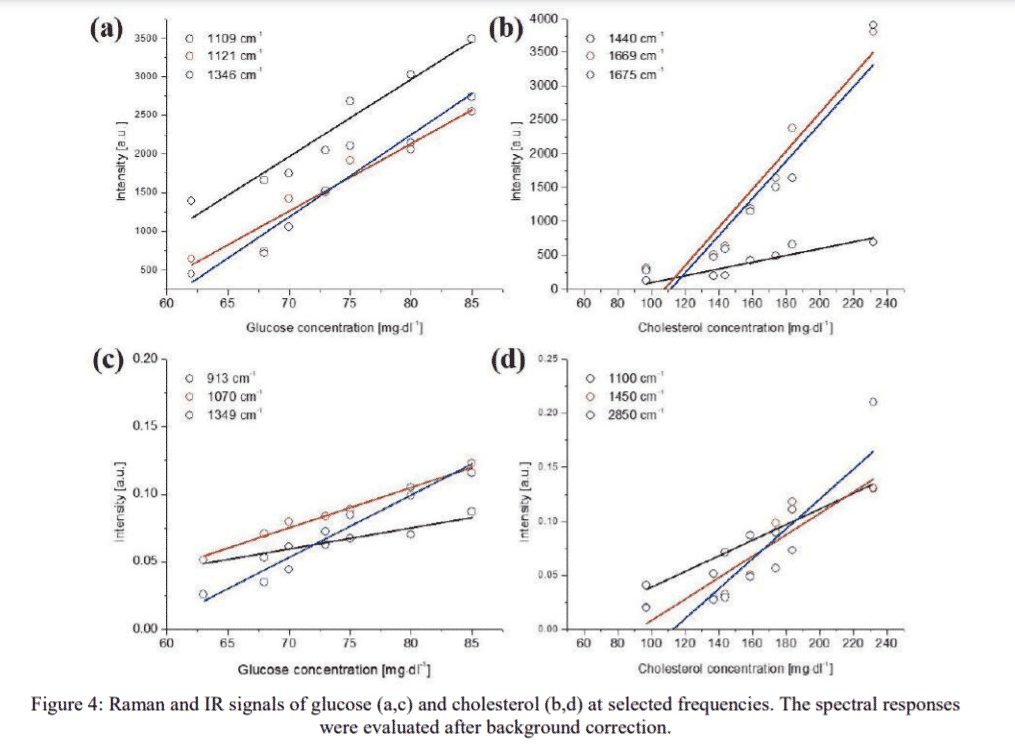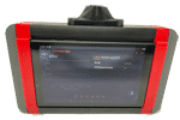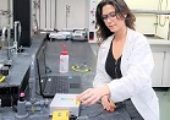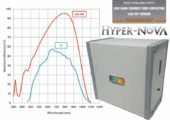Roekmono1 , Harsono Hadi1 , Hilya Nur Imtihani2 , Luthviyah Choirotul Muhimmah1 , Rio Akbar Yuwono3 , Ruri Agung Wahyuono1*
Abstract
This work aims at investigating the reliability of ZnO-paper based microfluidic analytical devices (ZnO-µPAD) for blood plasma separation as well as bio-sensing of glucose and cholesterol. Two-layer paper-based microfluidic analytical devices coated with ZnO nanoflowers/ZnO spherical aggregates (ZnO-µPAD) for a rapid blood plasma separation and glucose sensing were developed. Plasma separation in ZnO-µPAD was evaluated experimentally and numerically using computational fluid dynamics package for a flow over porous networks. Glucose and cholesterol detection was carried out using spectroscopic techniques, both Fourier-transform infrared (FTIR) and Raman measurements. The plasma separation process on ZnO NF-μPAD requires 250 s. The spectroscopic investigation reveals that the IR absorptions and Raman signals at the typical vibrational frequencies of glucose and cholesterol are increasing at higher concentration. After subtraction from absorption background arising from ZnO and the paper, a specific and linearly increasing IR absorption (913 and 1349 cm-1 ) and Raman signals (1346 and 1461 cm-1 ) are observable with a relatively good sensitivity.
Introduction
Researchers widely developed paper-based microfluidic devices since it is inexpensive, flexible, light-weight and environmentally friendly. Paper-based microfluidic devices are being exploited in a wide range of applications, including clinical diagnostics, sensing, and energy system. In case of clinical diagnostics, paper-based microfluidic analytical devices (µ-PADs) offer a cheap alternative-platform for blood plasma separation and point-of-care diagnosis. Typical plasma separation used centrifuge which is less time-efficiency and requires at quite large blood sample volume. Furthermore, existing clinical diagnostic measurements need expensive instruments and advance knowledge for analysis. Nowadays, several handheld blood-analyzers were commercialized; it used only small blood sample volume and also does the analyzing in short time. Handheld bloodanalyzers were used worldwide by people, but it did not provide the blood plasma separation. As reported by Songjaroen et a, blood plasma separation is necessary for some clinical diagnostic to avoid the cells interference during analytical measurements. Read publication…

Spectrometer Measurements
The glucose and cholesterol level of seven samples was evaluated clinically (Ultra Medica Clinical Laboratory). The glucose and cholesterol detection tests of the separated blood plasma were carried out by Fourier-transform infrared (FTIR) measurements (Thermo Scientific Nicolet iS10) within the range of 400 – 4000 cm-1 . Raman spectra of separated blood plasma were collected using an electric cooled spectrometer (Raman-HR-TEC, StellarNet) and a diode laser of 120 mW output for excitation at 785nm. The setup operates via fibres in a 180-degree arrangement and all the measurements were done in triplicate. Go to StellarNet Raman Systems.
Conclusion
ZnO-µPADs with a bilayer filter paper enable blood plasma separation directly without further dilution. The separated blood plasma in the detection zone of ZnOµPADs were characterized with the vibrational spectroscopy to detect the glucose and cholesterol level in the blood plasma. A relatively fast plasma separation (~ 250 s) is achieved and higher blood plasma concentration is accumulated in the mid of detection zone. Measurements using FTIR and Raman spectroscopy results in linear measurement characteristic of glucose and cholesterol with different specificity and high sensitivity. More importantly, this study opens other rooms for optimization toward an efficient blood plasma separation and high performance analytical devices, including the geometrical design of separation channel, the pore structure and volume of ZnO, the deposition method of ZnO colloidal solution, and the sensing/detection method. Read publication…





